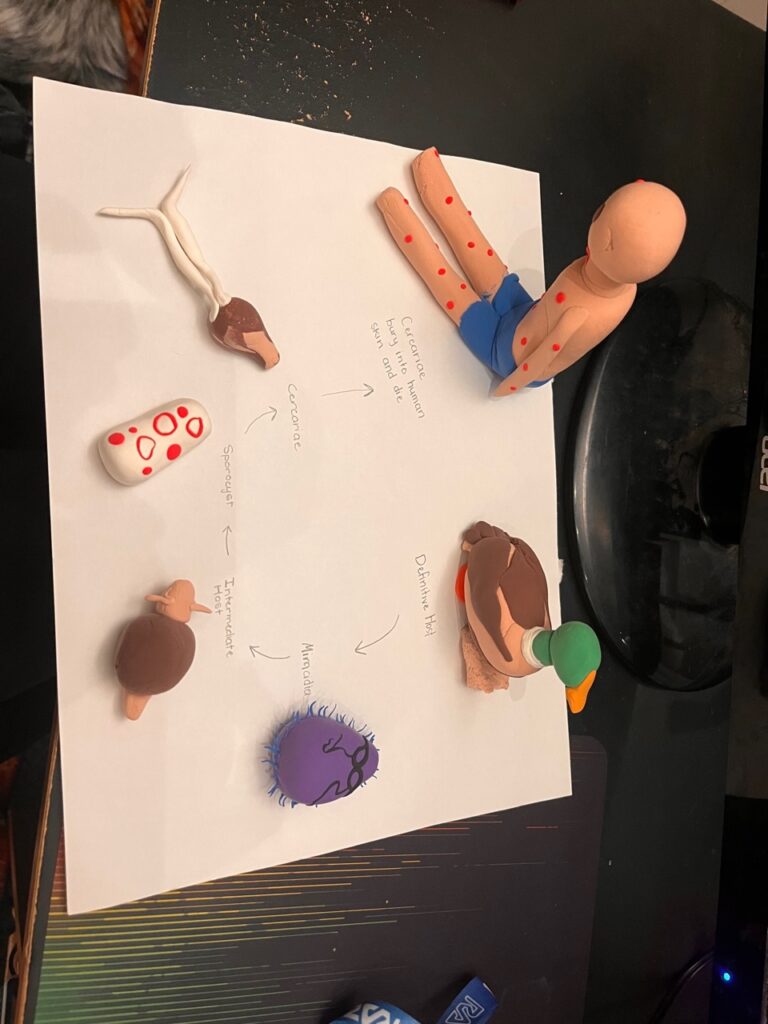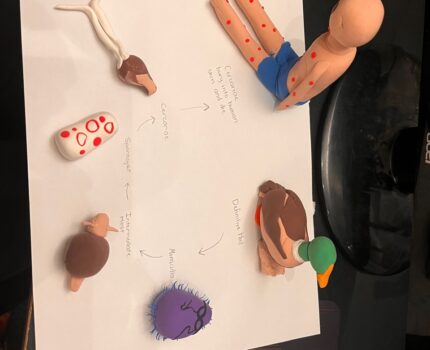Swimmer’s Itch, or cercariae dermatitis, is a very common problem found at recreational bodies of water. It causes little bumps to sprout up all over the skin that are extremely itchy and uncomfortable. These little itchy bumps are caused by many parasitic larvae that penetrate the skin, and then later die. Your body’s reaction to the foreign invaders is to cause an inflammatory allergic reaction, which is what causes the itchy bumps. Luckily for Americans, the cercariae are unable to survive in human bodies and do not develop into fully grown schistosoma. In many other countries, people who become infected with schistosoma eggs do not contract cercariae dermatitis, but rather schistosomiasis. Schistosomiasis occurs when the cercariae mature to full grown schistosoma. The life cycle of the parasite known to cause swimmer’s itch, cercariae, starts with a definitive host. Usually definitive hosts are mammals such as birds, and once the parasite has penetrated the definitive hosts, the male and female will reproduce and discharge eggs into the water. When the eggs hatch, they release ciliated miracidia that go on to affect their intermediate host, which happens to be snails. The miracidia then transforms into a mother sporocyst and produces many daughter sporocysts that travel to the snail’s digestive gland. The daughter sporocysts, once in the digestive gland, produce hundreds of cercariae. The cercariae leave the snail, and are carried by the water where they will penetrate their mammalian host and the life cycle continues. If the cercariae come into contact with human skin, they will bury themselves into the skin, in which the human body will incite a strong inflammatory allergic reaction, where the cercariae die. This results in the small red bumps that itch on the skin.(Loker et al., 2022) The symptoms of swimmer’s itch can range from mild to severe rashes. The severity of symptoms depends on how the individual interacts with the water. At first, little red bumps will appear on the skin, and can develop into extremely itchy rashes. Scratching the rashes can cause severe pain, and swelling or infection can occur. Symptoms can arise as soon as several minutes after swimming in contaminated water, or can appear as late as a couple days. The symptoms can last for several days or several weeks, depending on how many parasites have penetrated the skin.


